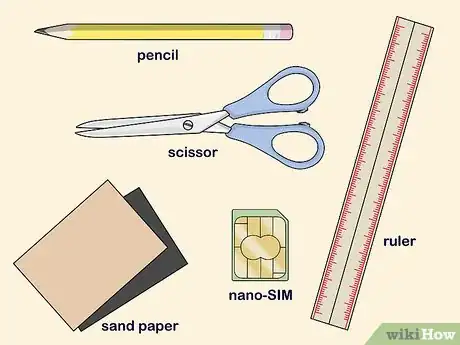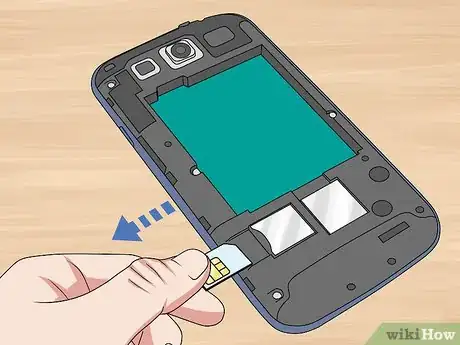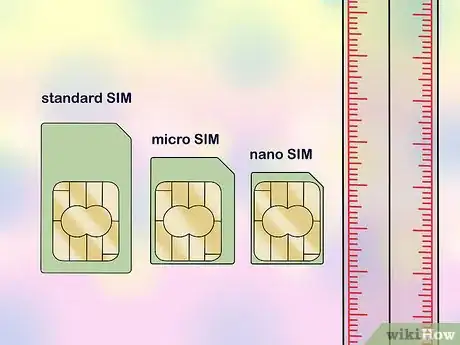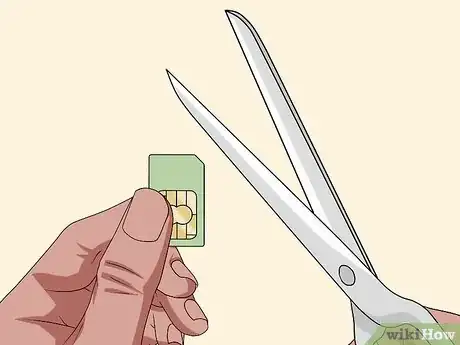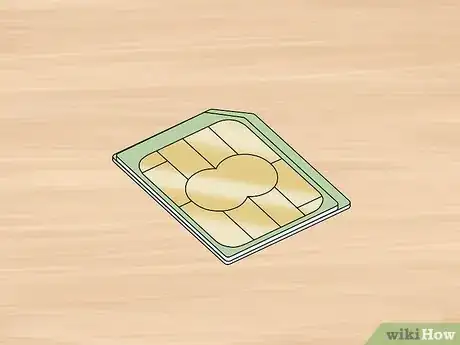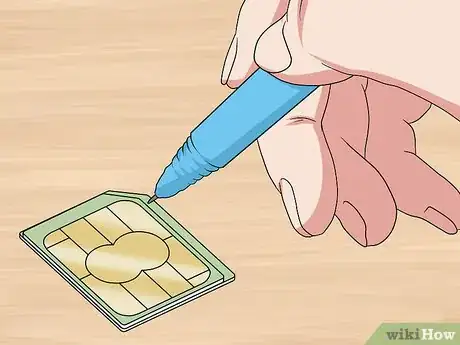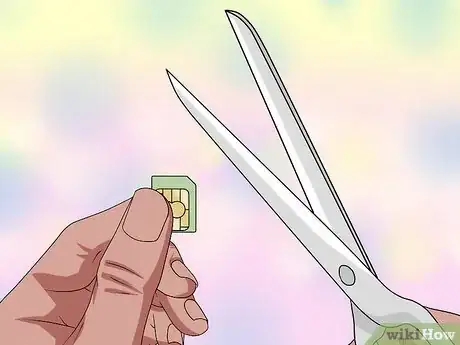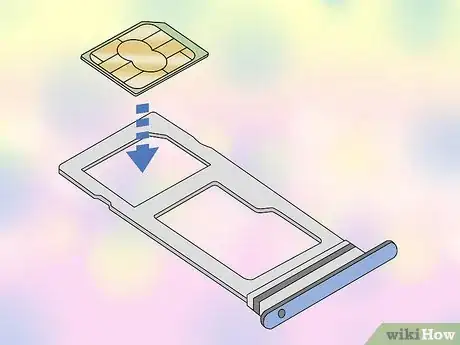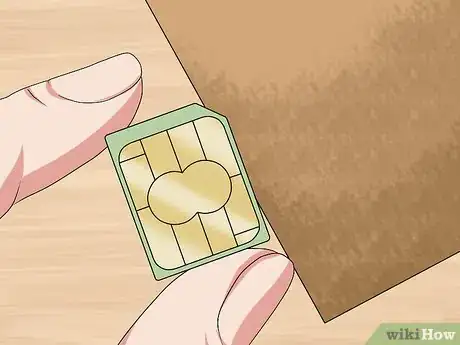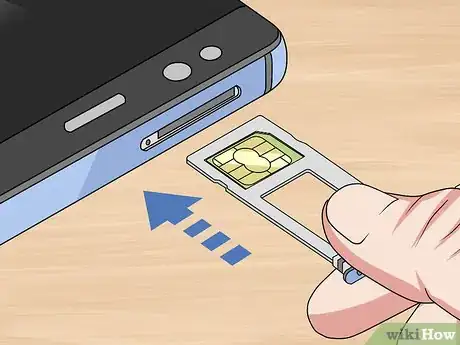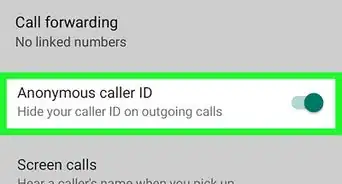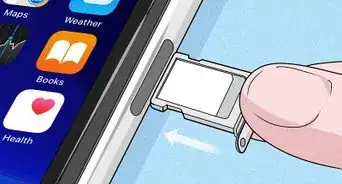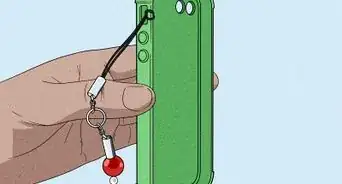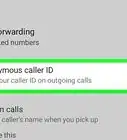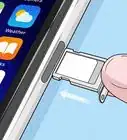This article was co-authored by wikiHow staff writer, Jack Lloyd. Jack Lloyd is a Technology Writer and Editor for wikiHow. He has over two years of experience writing and editing technology-related articles. He is technology enthusiast and an English teacher.
This article has been viewed 113,141 times.
Learn more...
This wikiHow teaches you how to turn a standard or micro-SIM card into a nano-SIM card. While SIM cards can vary in size, the part of the SIM card that actually stores data is the same size in all three SIM card types. Keep in mind that cutting your SIM card incorrectly will render the SIM card impossible to use or repair; proceed at your own risk.
Steps
-
1Gather your equipment. You'll need the following items in order to cut your SIM card:
- A pair of straight, sharp scissors
- A nano-SIM card for comparison
- A pencil
- A file (or sandpaper)
- A ruler
-
2Know what to avoid. When cutting a SIM card, you don't want to cut into the metal part of the card, as doing so will render the SIM card useless (and irreparable). The best way to ensure that you don't accidentally cut into the metal is by cutting wider than is necessary and then using your file or sandpaper to get the SIM card down to the size you need.Advertisement
-
3Eject your old phone's SIM. If you don't already have the SIM card that you want to cut removed from your old phone, remove it before proceeding.
-
4Determine the current SIM card's size. Using your ruler, figure out which of the following SIM cards you have to cut:[1]
- Micro-SIM - Measures 12mm by 15mm.
- Standard SIM - Measures 15mm by 25mm.
-
5Trim the excess from a standard SIM card. If you're trying to cut a standard SIM card, start by cutting along the line created by the cut-out sections on the left side of the card. This should leave a couple of millimeters' worth of space between the left edge of the card and the metal part of the SIM card.
- The left side of the standard SIM card is the side that doesn't have an angled piece missing from the corner.
- Skip this step if you have a micro-SIM card.
-
6Place your nano-SIM card on top of the other SIM card. You cannot adequately measure the amount of space to cut without using a nano-SIM card as a guide. To ensure that you do this in as uniform a way as possible, do the following:[2]
- Place the standard or micro-SIM card on a flat surface.
- Make sure that the angled corner of the SIM card is in the top-right corner of the card when looking down at it.
- Place the nano-SIM card on top of the SIM card.
- Make sure that the angled corner of the nano-SIM card is in the top-right corner of the card when looking down at it.
- Make sure that bottom-left-most corner of the nano-SIM card is lined up over the bottom-left-most corner of the SIM card that you're going to cut.
-
7Trace an outline of the nano-SIM onto the bottom SIM card. Using your pencil, draw a line around the nano-SIM card's edge. This will help guide the amount that you cut.
-
8Cut around the outline. It's best to err on the side of caution, so don't worry about cutting a little bit wider than the outline.
-
9Try to place your SIM card in its tray. It most likely won't fit, but doing this will give you an idea of how much of the card needs to be filed down.
- Some Android phones don't use a SIM tray. If this is the case for your phone, just try to insert the SIM card into its slot.
-
10File down the remaining plastic. Using your nail file or sandpaper, remove most of the plastic border on the bottom and sides of the SIM card.
- Keep the majority of the plastic at the top of the SIM intact until after you've tested the SIM card's fit.
- Keep in mind that a nano-SIM card still has about a millimeter of plastic around its perimeter, so stop short of removing 100 percent of the plastic.
- Use the existing nano-SIM card that you have as a reference for this step.
-
11Try to place your SIM card in its tray again. If it fits, you've successfully cut down the SIM card to a nano-SIM size; at this point, you're free to test the nano-SIM card in your phone by inserting the SIM card and powering on the phone.
- If the SIM card still doesn't fit, you'll need to file it down some more.
- Again, if you're using an Android phone that doesn't have a SIM tray, just try to push the SIM card into the SIM slot.
Warnings
- Cut a micro SIM at your own risk; damage to your SIM card during the cutting process cannot be reversed, and you will be required to purchase a new SIM card if you accidentally cut into the metal contacts.⧼thumbs_response⧽
- Your service provider's warranty will not cover damage to the SIM card.⧼thumbs_response⧽
References
About This Article
1. Trim the excess around the border.
2. Place the smaller SIM card on top of the one you're cutting.
3. Trace an outline around the smaller SIM.
4. Cut around the outline.
5. Try to put the card in the tray.
6. File down the remaining plastic for a more secure fit.
